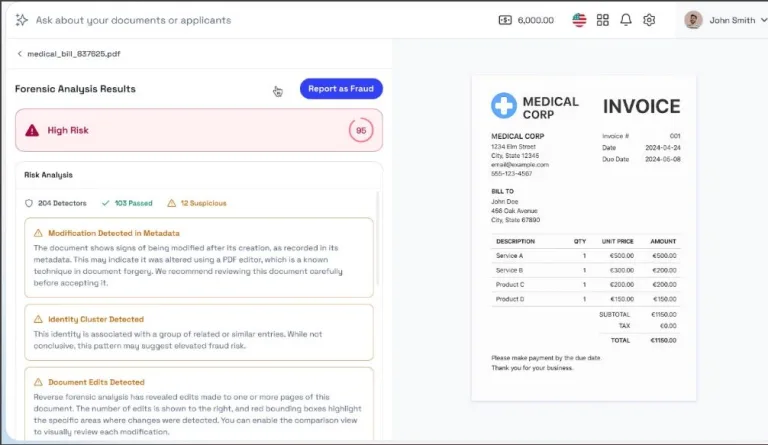Belvarium: The best AI project coming up with big bonus
Artificial intelligence has been reshaping industries for years — from the way we communicate to how we invest, create, and even diagnose disease. But as AI systems get smarter and more autonomous, one challenge remains largely unsolved: how can machines actually participate in the economy they help drive?
That’s the question Belvarium is trying to answer. Positioned at the crossroads of blockchain and AI, the project is building what it calls an “economic layer for intelligent systems” — a decentralized network where algorithms, bots, and autonomous agents can transact with each other securely, transparently, and without human supervision.
If it succeeds, Belvarium could become a key piece of infrastructure for the next wave of AI automation — one where machines not only analyze data but also make payments, trade assets, and collaborate independently.
A Foundation for the Machine Economy
Most AI platforms today rely on subscription models or credit-based payment systems. That works fine for human users but not for autonomous systems that need to interact with multiple platforms or handle thousands of small transactions.
Belvarium’s approach is different. It combines blockchain’s trustless architecture with AI’s ability to make dynamic, data-driven decisions, creating a system where value moves as efficiently as information.
At the heart of it is a tokenized payment framework that allows AI systems to pay for services — computing power, datasets, or API access — automatically. Transactions are handled by smart contracts, meaning they’re executed instantly and verifiably without intermediaries.
In practice, that means a machine learning model could autonomously rent extra cloud capacity to process data, or an AI trading bot could buy and sell market signals in real time — all governed by code and cryptography rather than banks or centralized APIs.
Under the Hood: How Belvarium Works
Belvarium’s architecture is built for speed, transparency, and scale — three qualities critical for AI-integrated systems. Its custom blockchain network uses an optimized consensus mechanism that allows high transaction throughput without sacrificing decentralization.
But the real innovation lies in how it handles interoperability. Belvarium doesn’t want to exist in isolation; instead, it’s designed to integrate with existing ecosystems — from Ethereum and Solana to AI platforms like OpenAI or Anthropic. Its API layer makes it possible for developers to connect Belvarium’s token framework directly to machine-learning models or data pipelines.
Other core features include:
- Smart Contract Automation: Pre-programmed contracts handle payments, licensing, and service access without human input.
- Transparent Ledgers: Every transaction is auditable, reducing the risk of fraud or data manipulation.
- Energy Efficiency: Its consensus protocol minimizes energy use, addressing one of blockchain’s biggest criticisms.
- Cross-Chain Compatibility: It supports interaction between multiple blockchain ecosystems, ensuring maximum flexibility for developers.
In short, Belvarium is designed not just as a token but as a transactional protocol for AI economies — one that blends automation with accountability.
The Bigger Picture: Why This Matters
The relationship between AI and blockchain has always been more promise than reality. Many projects have used the buzzwords without building actual bridges between the two technologies. Belvarium is one of the few trying to make that integration work at a practical, infrastructure level.
In doing so, it addresses several real-world problems:
- Transparency in AI operations: By logging decisions and transactions on-chain, Belvarium could make AI systems more accountable.
- Fair access to digital marketplaces: Artists, developers, and researchers could monetize their AI creations without depending on centralized platforms.
- Automation of value exchange: Machine-to-machine payments become feasible at scale, laying the groundwork for a true “machine economy.”
It’s a concept that fits the direction industries are already heading. As businesses automate more workflows, they’ll need systems that can handle the economic side of that automation — not just the data.
Governance and Community-First Approach
While many blockchain projects launch with heavy insider ownership, Belvarium’s distribution model emphasizes community participation. Governance decisions — from protocol updates to ecosystem funding — are handled through decentralized voting, giving users and developers a say in how the network evolves.
This structure not only enhances transparency but also builds trust, especially in a sector often criticized for centralization behind supposedly decentralized projects. The team has also placed sustainability high on its list of priorities, opting for lightweight computational models to keep energy usage low.
Looking Forward
Belvarium isn’t promising to replace the financial system overnight. Instead, it’s building the plumbing for the next phase of digital transformation — where AI systems and humans coexist economically. The platform envisions a world where your AI assistant could pay another AI for data, or a fleet of self-driving cars could collectively negotiate tolls, energy usage, or maintenance fees — all autonomously, all on-chain.
If this vision sounds ambitious, that’s because it is. But it’s also where technology seems to be heading. The line between “software” and “participant” is blurring, and Belvarium’s infrastructure could be the ledger that keeps it all running smoothly.
As industries prepare for the rise of intelligent automation, Belvarium’s mix of blockchain transparency, scalability, and AI-native design might make it one of the most relevant innovations in the coming decade. It doesn’t just imagine a smarter digital economy — it’s quietly building one.
Belvarium: Everything you need to know about the AI hype
Artificial intelligence has already proven it can think, analyze, and generate. But can it transact? As AI agents begin to make decisions with real-world consequences — buying data, managing resources, or deploying digital assets — the need for a secure and transparent economic infrastructure becomes clear. That’s the space Belvarium wants to own.
Belvarium isn’t just another blockchain or another AI integration experiment. It’s an attempt to construct a transactional backbone for the machine-driven economy that’s emerging faster than most industries can adapt to. At its core, Belvarium enables intelligent systems to interact economically — to send, receive, verify, and store value without relying on traditional payment networks or central intermediaries.
From AI Models to Autonomous Actors
We’ve entered a new phase of AI evolution. Models like GPT-style assistants, computer vision systems, and autonomous trading bots are already making decisions independently. But as these systems evolve from tools to actors, they’ll need economic agency — the ability to pay for services, license content, and execute agreements.
This is where Belvarium’s innovation lies. By merging the reliability of blockchain with the adaptability of artificial intelligence, it provides a framework for autonomous value exchange. Instead of using centralized credits or accounts, AI systems on Belvarium can hold and spend tokens directly through programmable contracts.
Imagine an AI research assistant that autonomously purchases access to a dataset or cloud resource. Or a logistics optimization system that compensates other AIs for traffic data. With Belvarium, those transactions become frictionless and verifiable — every interaction recorded on-chain, every rule encoded in software, every payment processed without human oversight.
Architecture for a Machine-Ready Economy
Technically, Belvarium is structured around three key components: the Belvarium Core, the Smart Contract Layer, and the Interconnect Protocol.
- Belvarium Core serves as the blockchain’s foundation, optimized for low-latency, high-frequency interactions between AI systems. Its hybrid consensus mechanism blends efficiency with decentralization, ensuring scalability without compromising trust.
- The Smart Contract Layer automates everything from micropayments to licensing agreements, enabling AI entities to perform complex economic interactions with minimal computational overhead.
- The Interconnect Protocol ensures interoperability, allowing Belvarium to connect seamlessly with major chains like Ethereum, Solana, and Polkadot — as well as integrate with AI platforms through simple API endpoints.
The result is a modular and extensible system designed for flexibility. Developers can integrate Belvarium’s payment rails into existing applications or build entirely new decentralized AI services powered by self-executing code.
Trust, Transparency, and Explainability
One of the biggest concerns surrounding AI today is the lack of transparency — how decisions are made, who benefits, and whether biases are being amplified. Belvarium addresses this issue through blockchain’s inherent transparency. Every transaction, data exchange, and algorithmic interaction can be logged in an immutable ledger, allowing for independent verification.
This opens the door for explainable AI ecosystems, where every machine-to-machine transaction leaves an auditable trail. It’s a subtle but important shift: rather than trusting the black box, Belvarium lets organizations and regulators see the logic and data flows that drive automated decisions.
For industries like finance, healthcare, and logistics, that’s a potential game changer. The combination of blockchain accountability with AI intelligence doesn’t just improve efficiency — it strengthens compliance, governance, and trust.
Community and Governance
Belvarium’s creators emphasize a community-first model. Unlike projects that allocate massive token shares to insiders, Belvarium’s distribution aims to ensure that control remains decentralized. Governance decisions are handled through a transparent voting system, allowing token holders and developers to influence upgrades, integrations, and funding initiatives.
This design aligns with the broader principle of distributed intelligence — a belief that both human and artificial participants should have a voice in shaping the ecosystems they inhabit. In practical terms, it makes Belvarium more adaptive and less vulnerable to single points of failure or manipulation.
The Broader Vision
Belvarium’s long-term ambition is to power a new machine economy — one where AI systems don’t just serve humans but also trade with each other in an open market. Picture fleets of autonomous vehicles negotiating energy consumption in real time, or predictive AI systems dynamically licensing datasets among one another.
Such possibilities may sound futuristic, but they’re a logical progression from where AI stands today. With the rise of agentic AI systems and autonomous tools, we’re witnessing the first steps toward software entities that manage not only information but also economic value.
Belvarium provides the infrastructure to make that possible — a distributed, transparent, and programmable foundation for intelligent commerce.
Why It Matters
What sets Belvarium apart isn’t just its technology — it’s its timing. The convergence of blockchain and AI has been discussed for years, but few have managed to make the two ecosystems truly interoperable. Belvarium’s approach, blending on-chain transparency with off-chain intelligence, finally offers a bridge that feels both credible and necessary.
In a digital world where trust is scarce and automation is accelerating, Belvarium represents more than a blockchain project. It’s an early blueprint for the economic logic of the AI era — one where machines, algorithms, and humans coexist within a shared and verifiable economy.



